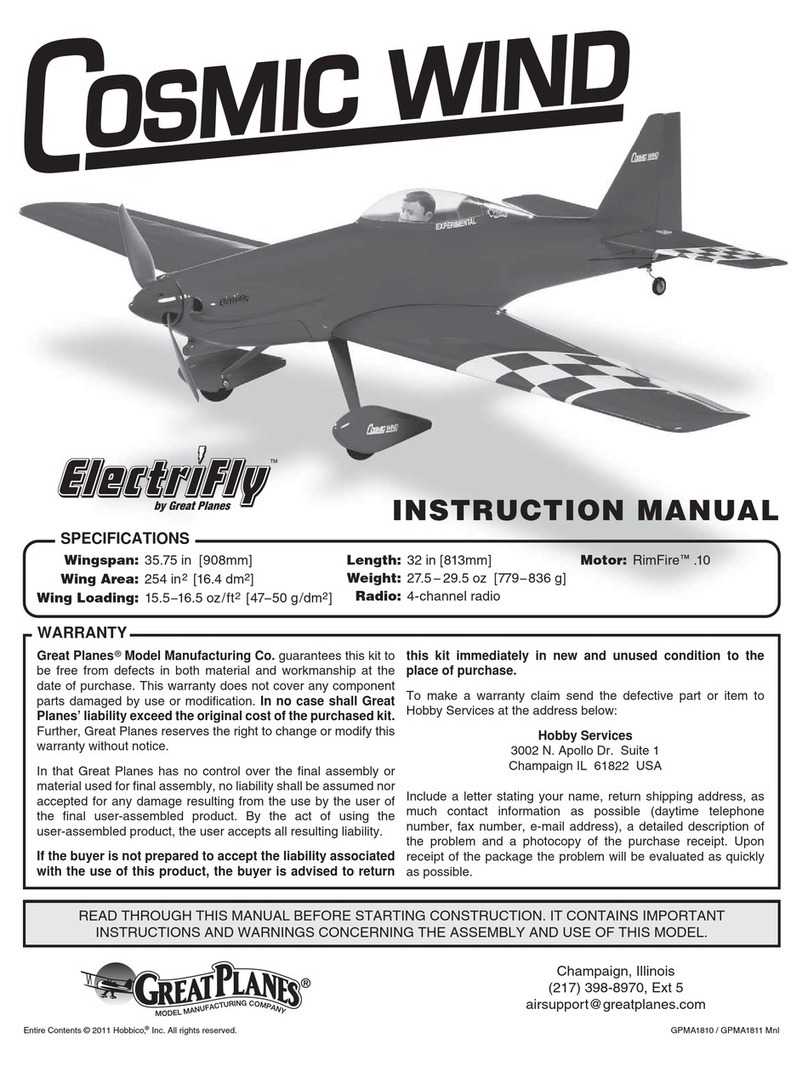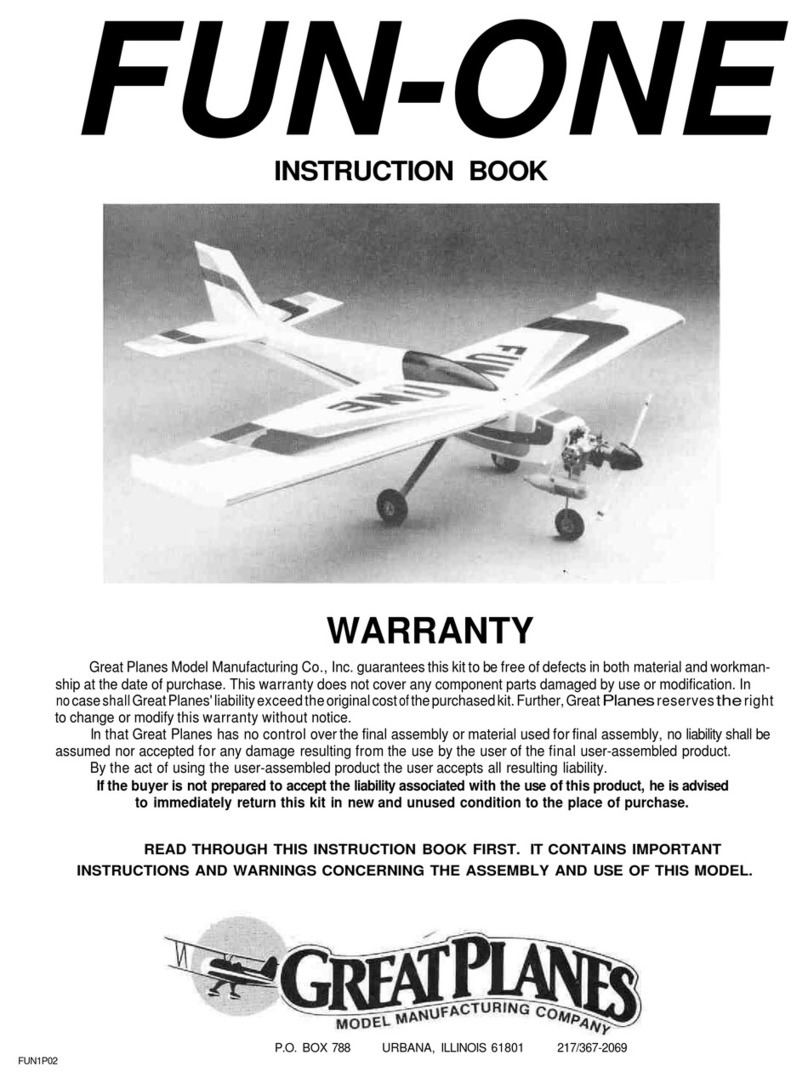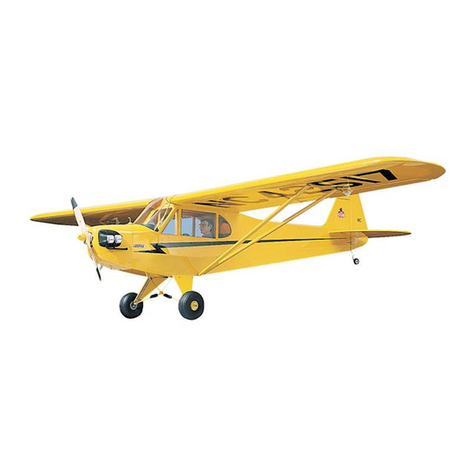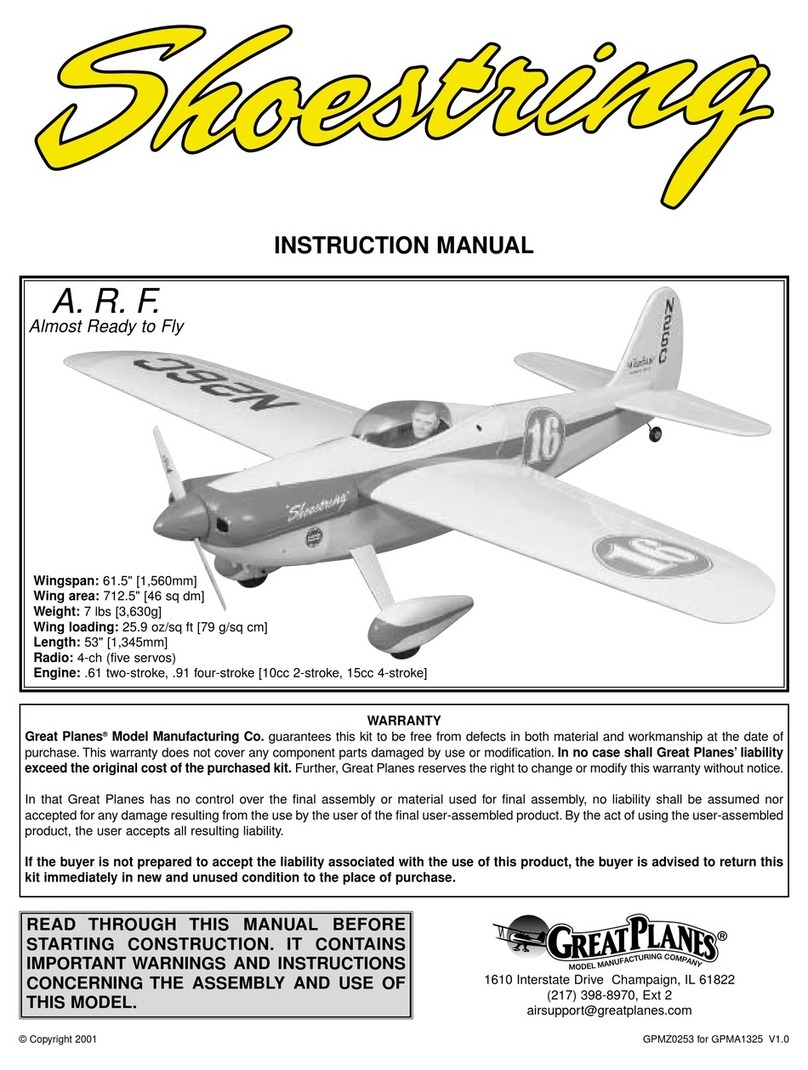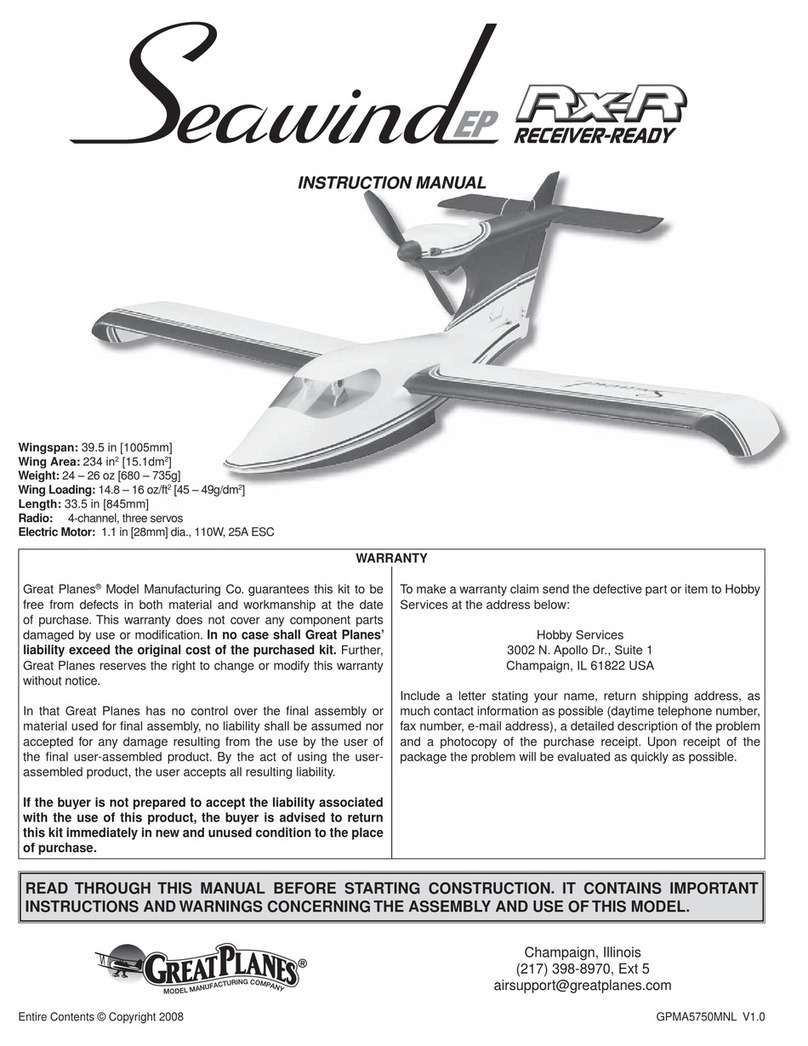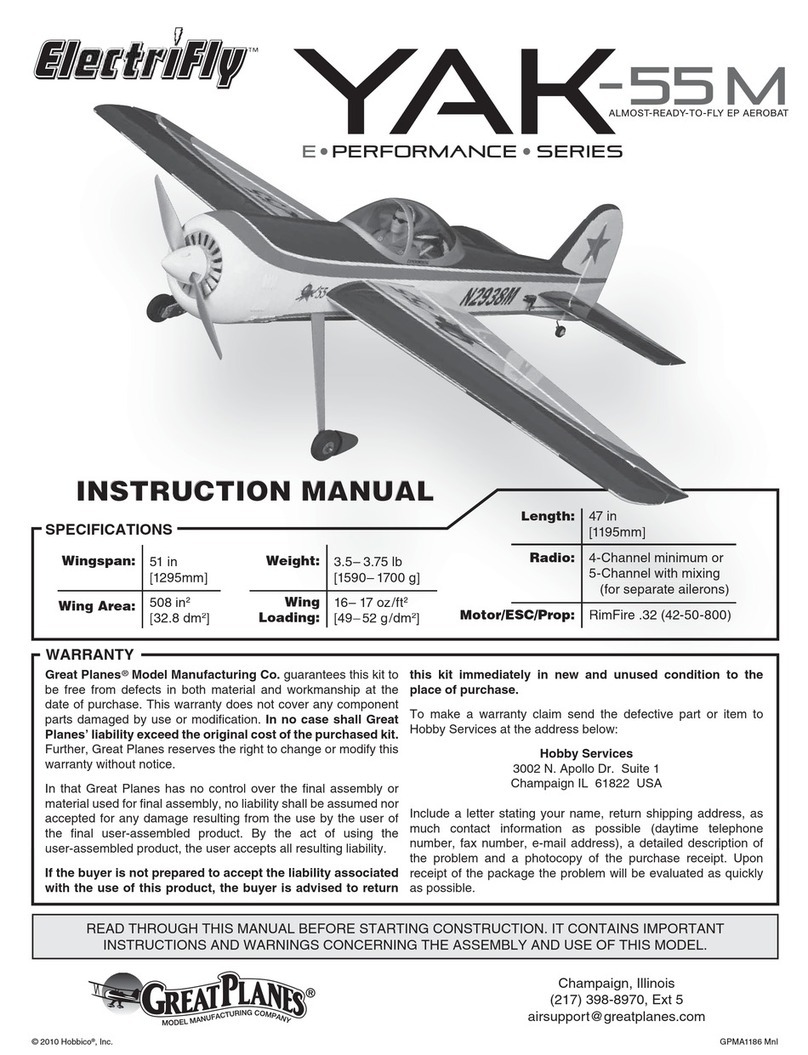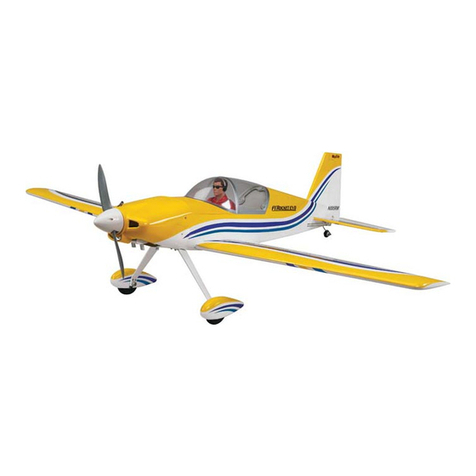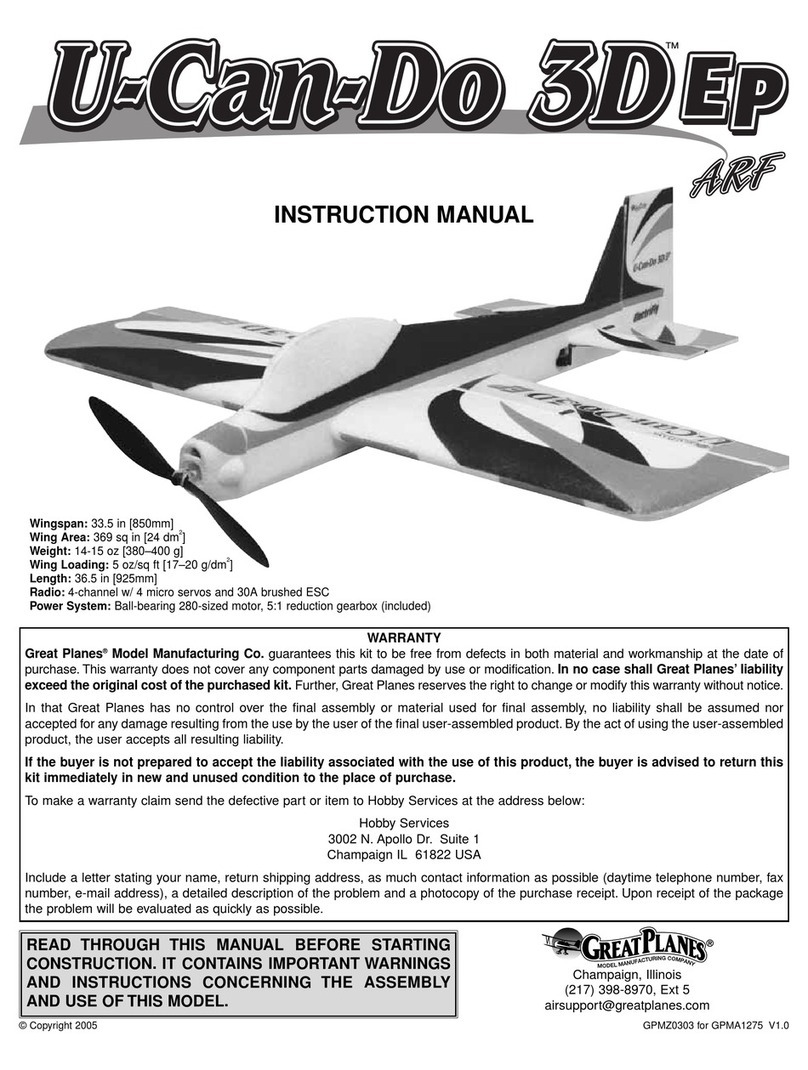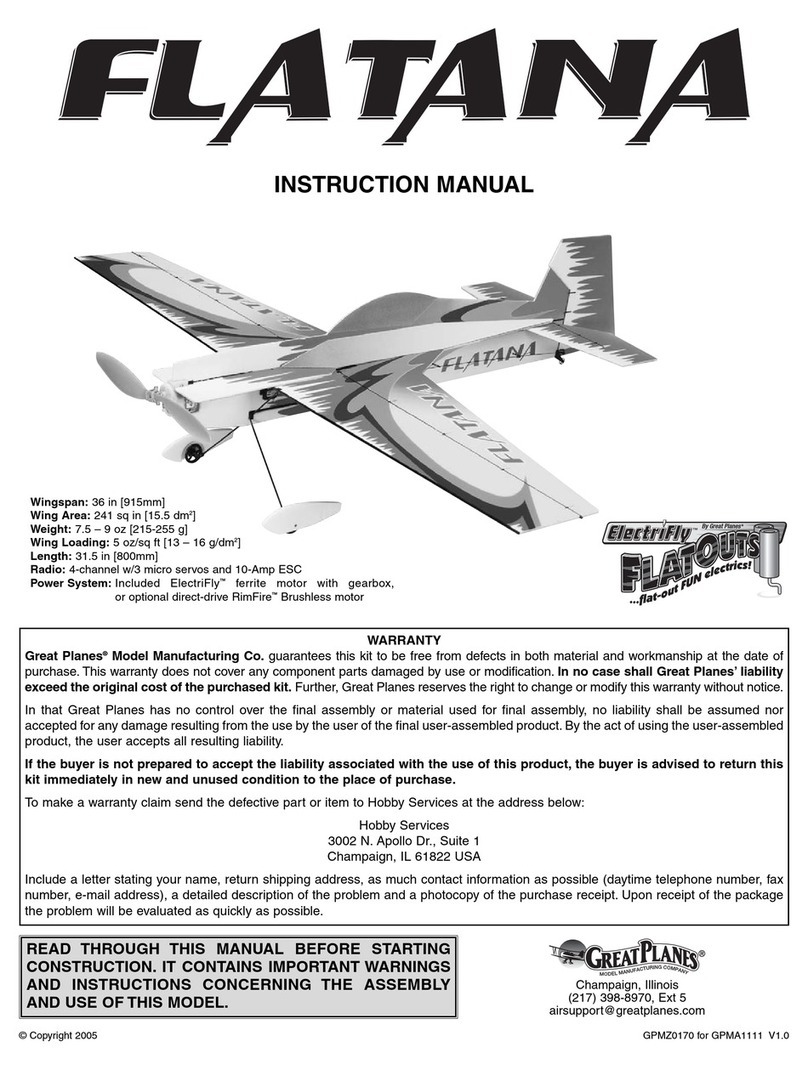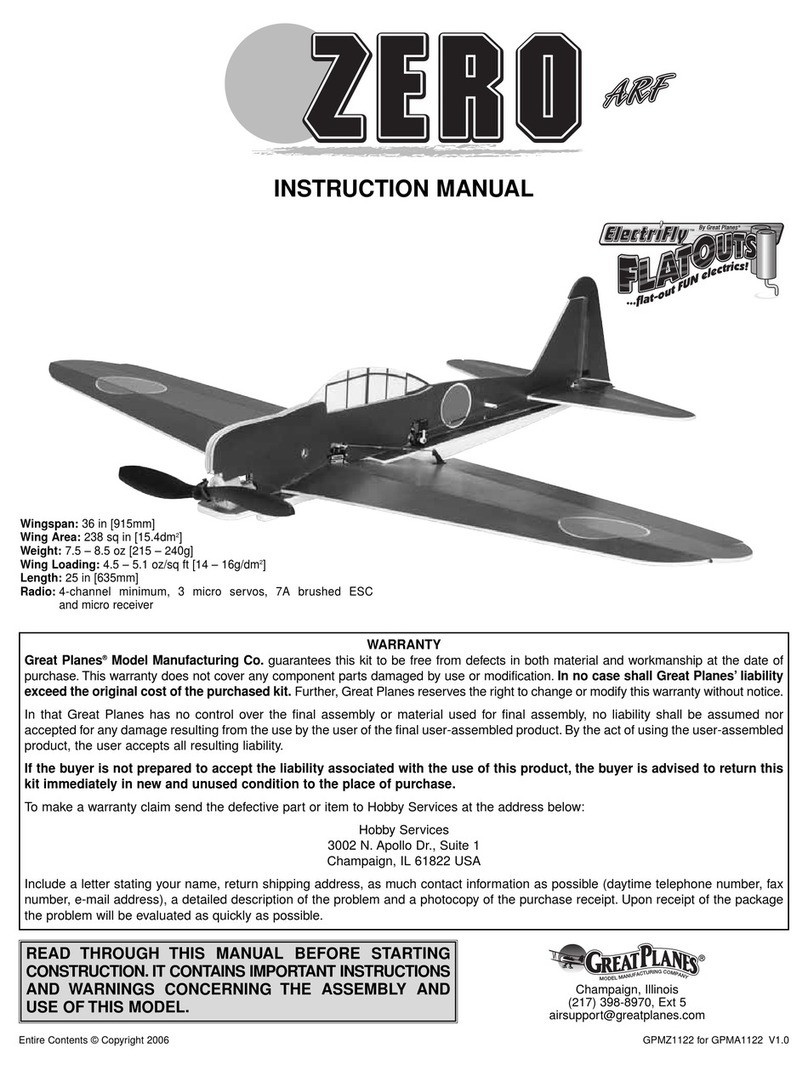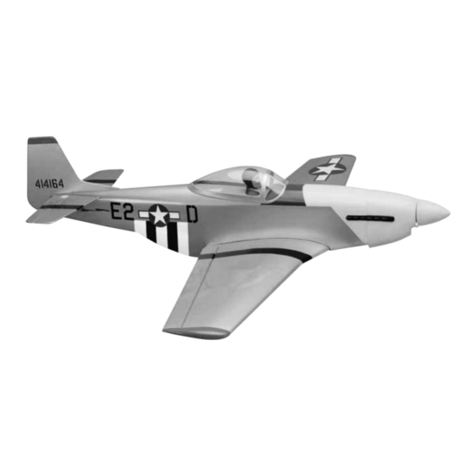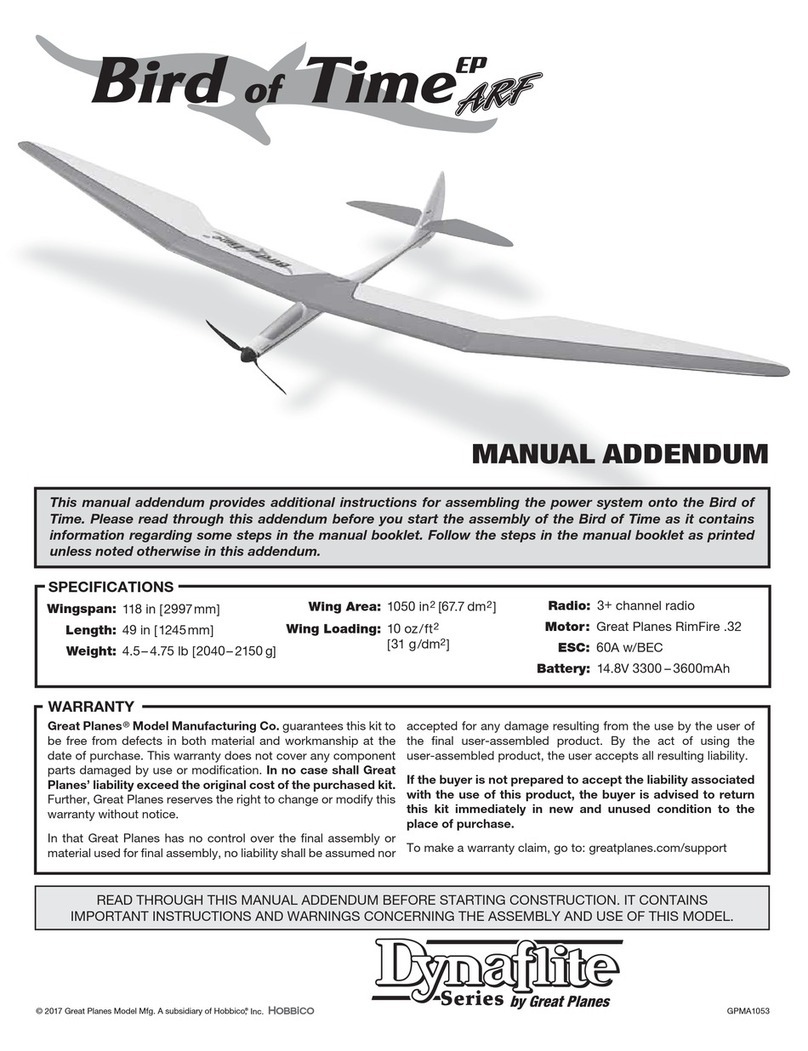INTRODUCTION
Congratulations! Thank you for purchasing the Great
Planes Super Decathlon 40!
The Super Decathlon 40 isa 1/6-scalemodel of a full-
sizeBellanca Super Decathlon, owned by PeteMyers, lo-
catedat Howell Airport in New Lenox, IL. The airplane was
builtbyChampion Aircraft in 1979.Petecalls his Super
Decathlon "experimental" because he has made a few
changes toenhance itsacrobatic capabilities, the mostnotice-
able ofwhich are the squared-off "clipped" wing tips.The
normal wingspan wouldbe32';but,due tothe specialtips,
Pete's Decathlon spans only30.5'.You will notice that the
model's wingspan has beenincreased by5% to enhance the
flyingqualities.
Ifyou are interested insport scalecompetition, you'llbe
happy toknow that color photos of Pete's full-size Super
Decathlon areavailablefrom Scale ModelResearch, 2334
Ticonderoga Way,Costa Mesa, CA 92626.
The Super Decathlon40 is easy to build and fly,predict-
able, highlyacrobatic, and has no "badhabits," making it a
great sport-scale airplane (aslong asyou don'tget carried
away with the glue bottle and make it a "lead sled")!
Althoughthe model is sufficientlycloseto scale that it can
place well in sport-scale competition, traditional Great
Planesquality and ruggedness is evident throughout, making
this an airplane you'llwantto take along every time you go
tothe flyingfield.
This isnot a beginner's airplane! While the Super
Decathlon 40 is easy tobuildand flies great, we must
discourage youfrom selecting this kit asyour first R/C
airplane. Itis fast, highlymaneuverable, and lacks the self-
recovery characteristics of a good basic trainersuch asthe
Great Planes PTSeries airplanes. On the other hand, if you
havealready learnedthebasics ofR/C flyingandyouareable
tosafely handle an "aileron trainer" airplane such as the
Great Planes Trainer Series or Big Stick Series airplanes,
the Super Decathlon 40 is an excellent choice.
3.You mustuse aproperR/C radio that is in firstclass
condition, the correct sized engine and correct components
(fuel tank, wheels, etc.)throughout your buildingprocess.
4.You mustproperly install all R/C and othercompo-
nents sothat the model operates properly on the ground and
inthe
air.
5.You musttest the operation of the model before the
firstandeach successive flighttoinsure thatallequipmentis
operating, and you mustmake certain that the model has
remained structurally sound. Be sure to check the nylon
clevisesoften, and replaceifthey show signs ofwear.
6.You mustfly the model only with the competent
help ofa well experienced R/C pilot ifyouare not already an
experienced and knowledgeable R/C pilot at this lime.
Note: We, asthekitmanufacturer,canprovideyou with
atop quality kit and great instructions, butultimatelythe
quality and flyability ofyour finished model depends on
how you build it;therefore, we cannot in any way
guaranteetheperformanceofyourcompletedmodel, and
no representations arc expressed or implied asto the
performance orsafety ofyour completedmodel.
Remember: Take your time and follow directions to
end up with a well-builtmodel that is straight and
true.
COMMON ABBREVIATIONS USED IN
THIS BOOK AND ON THE PLANS:
Elev= Elevator
Fuse= Fuselage
LE = Leading Edge (front)
LG = Landing Gear
Lt = Left
Ply= Plywood
Rt = Right
Stab = Stabilizer
TE= Trailing Edge (rear)
"= Inches
PRECAUTIONS
1.You mustbuildthe plane according tothe plans
and instructions. Do notalterormodify the model, asdoing
somay result in an unsafe or unflyable-model. In a few cases
the plansand instructions may differslightly from thephotos.
In those instances you should assume the plans and written
instructionsarecorrect
2.Youmusttaketimetobuildstraight, trueandstrong.
INSTRUCTIONS IN BOXES LIKE THIS
ARE VERY IMPORTANT AND SHOULD
BE FOLLOWED CAREFULLY
3
